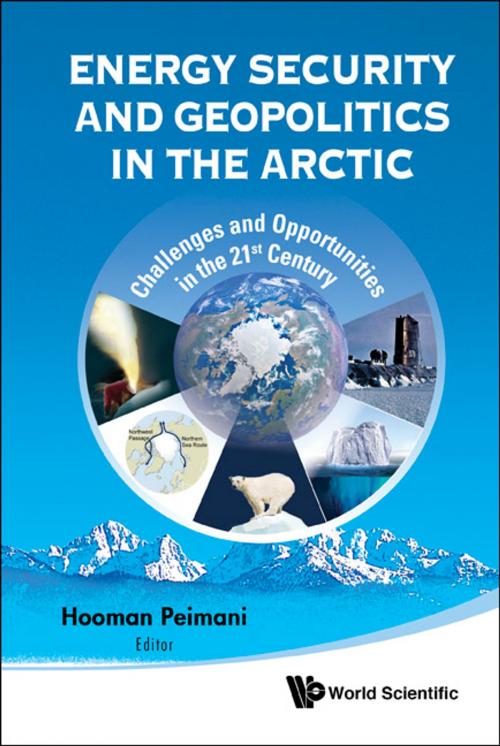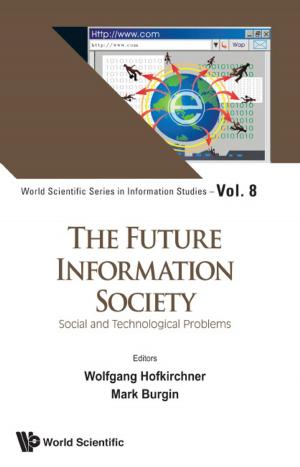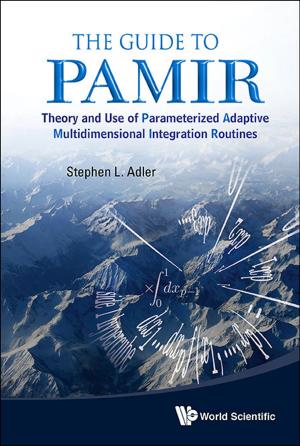Energy Security and Geopolitics in the Arctic
Challenges and Opportunities in the 21st Century
Business & Finance, Economics, Economic Development, Industries & Professions, Industries| Author: | Hooman Peimani | ISBN: | 9789814401487 |
| Publisher: | World Scientific Publishing Company | Publication: | April 1, 2013 |
| Imprint: | WSPC | Language: | English |
| Author: | Hooman Peimani |
| ISBN: | 9789814401487 |
| Publisher: | World Scientific Publishing Company |
| Publication: | April 1, 2013 |
| Imprint: | WSPC |
| Language: | English |
This book sheds light on how global warming has caused the ongoing environmental disaster in the Arctic, namely its melting. This development, if left unabated, will have a major negative environmental impact, not only on the Arctic itself, but on the entire planet, including the worsening of global warming and rising sea levels. The latter is a major threat to all island countries and all countries having coastlines with open seas with major environmental, social, economic, political and military/security implications. The Arctic melting is bringing about challenges while opening doors for certain opportunities. These are the accessibility of the region's large oil, gas and coal reserves and minerals, including rare earth elements. They are in demand both in the Arctic littoral states (Canada, Denmark/Greenland, Norway, Russia and USA) and the Greater Arctic countries (Iceland, Finland and Sweden) as well as in other parts of the world. In particular, major oil and gas importers (China, India, Japan and South Korea) are interested in the Arctic energy resources, the main non-regional countries with a capability to engage in the region. The obvious importance of the regional energy and mineral resources makes the division of the region among the regional countries crucial.
The melting of the Arctic ice will also lead to the availability for at least a few months a year of a Northern Sea Route and a Northwest Passage connecting Europe to North America and the North-Eastern part of Asia. The importance of these northern routes and the Arctic mineral and energy resources is contributing to a growing military presence of mainly the USA and Russia in this region, which could lead to an arms race. This book offers invaluable insights on the issues that have grave implications for energy security and geopolitics in the arctic.
Contents:
-
Introduction (Hooman Peimani)
-
Is the Arctic Melting?
- From White to Blue: The Shrinking Arctic Cryosphere (Shawn J Marshall)
- Possible Changes of the Russian Arctic Environment Under the Influence of Natural and Anthropogenic Factors (Vyacheslav Mikhailovich Makeev)
-
What are the Stakes for the Littoral States?
- The Transnational Arctic and Russia (Nadezhda Klimovna Kharlampyeva)
- Norway and Russia: Neighbours with Strong Interests in the Arctic (Arild Moe)
-
What are the Interests of the Non-Regional Large Economies?
- The Arctic: Geopolitics, International Relations and Energy Security — A View from India (Neil Gadihoke)
- The Arctic and Japan: Energy Security and Climate Security (Hiroshi Ohta)
- The Arctic Governance and the EU “Soft Power” (Danila Bochkarev)
- Conclusion (Hooman Peimani)
Readership: Graduates and researchers studying energy economics, governments, embassies, military institutes, research institutes, international organizations, environmental entities, energy (oil, gas and coal) and mining corporations and shipping companies.
Key Features:
- Only book on the Arctic focussing not just on environmental issues, but also on political, economic, energy and military/security issues geared towards the Arctic
- Signifies the emerging climate change-energy security-conflict nexus
- Policy-oriented work designed for decision-makers
This book sheds light on how global warming has caused the ongoing environmental disaster in the Arctic, namely its melting. This development, if left unabated, will have a major negative environmental impact, not only on the Arctic itself, but on the entire planet, including the worsening of global warming and rising sea levels. The latter is a major threat to all island countries and all countries having coastlines with open seas with major environmental, social, economic, political and military/security implications. The Arctic melting is bringing about challenges while opening doors for certain opportunities. These are the accessibility of the region's large oil, gas and coal reserves and minerals, including rare earth elements. They are in demand both in the Arctic littoral states (Canada, Denmark/Greenland, Norway, Russia and USA) and the Greater Arctic countries (Iceland, Finland and Sweden) as well as in other parts of the world. In particular, major oil and gas importers (China, India, Japan and South Korea) are interested in the Arctic energy resources, the main non-regional countries with a capability to engage in the region. The obvious importance of the regional energy and mineral resources makes the division of the region among the regional countries crucial.
The melting of the Arctic ice will also lead to the availability for at least a few months a year of a Northern Sea Route and a Northwest Passage connecting Europe to North America and the North-Eastern part of Asia. The importance of these northern routes and the Arctic mineral and energy resources is contributing to a growing military presence of mainly the USA and Russia in this region, which could lead to an arms race. This book offers invaluable insights on the issues that have grave implications for energy security and geopolitics in the arctic.
Contents:
-
Introduction (Hooman Peimani)
-
Is the Arctic Melting?
- From White to Blue: The Shrinking Arctic Cryosphere (Shawn J Marshall)
- Possible Changes of the Russian Arctic Environment Under the Influence of Natural and Anthropogenic Factors (Vyacheslav Mikhailovich Makeev)
-
What are the Stakes for the Littoral States?
- The Transnational Arctic and Russia (Nadezhda Klimovna Kharlampyeva)
- Norway and Russia: Neighbours with Strong Interests in the Arctic (Arild Moe)
-
What are the Interests of the Non-Regional Large Economies?
- The Arctic: Geopolitics, International Relations and Energy Security — A View from India (Neil Gadihoke)
- The Arctic and Japan: Energy Security and Climate Security (Hiroshi Ohta)
- The Arctic Governance and the EU “Soft Power” (Danila Bochkarev)
- Conclusion (Hooman Peimani)
Readership: Graduates and researchers studying energy economics, governments, embassies, military institutes, research institutes, international organizations, environmental entities, energy (oil, gas and coal) and mining corporations and shipping companies.
Key Features:
- Only book on the Arctic focussing not just on environmental issues, but also on political, economic, energy and military/security issues geared towards the Arctic
- Signifies the emerging climate change-energy security-conflict nexus
- Policy-oriented work designed for decision-makers















